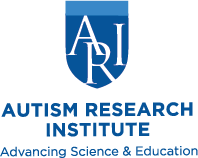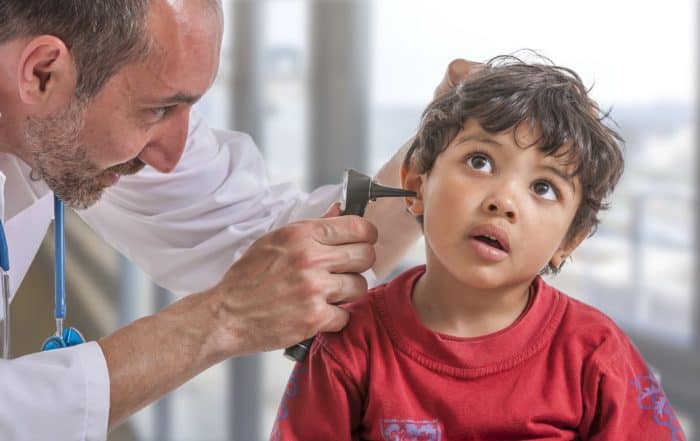As an anesthetic provider, I consider it part of my mission to help educate my colleagues and to help them understand that our children are sick – not just autistic. That is also my mission as a parent, as it is the mission of all parents.
This article represents my educated observations as an experienced nurse anesthetist who also happens to be the mother of a child on the road to recovery from an autism spectrum disorder (ASD). I am also a practitioner taking care of autistic children, so I look at these issues from a different perspective than my peers. The following observations suggest a need to heed issues that might have an impact on the delivery of anesthesia in individual cases and also suggest a need for rigorous study of the potential problems autistic individuals might have when undergoing anesthesia.

As a practicing anesthetist for over 25 years, I am in a position to observe trends in the patients I have helped treat. In recent years, I have seen an increase in children in the operating room for various procedures. A disproportionate number of those children have diagnosed developmental delays and behavioral problems in addition to their medical problems. There are no available statistics to quantify the numbers, but my anecdotal observations tell me that children need anesthesia in numbers that would have shocked us a decade or more ago.
The trends I have seen should come as no surprise, because autism spectrum disorders have reached epidemic numbers, and autistic children tend to have health problems. I am seeing an increase in the number of these children needing radiological procedures such as an MRI or a CT scan, as well as increasing numbers of autistic children admitted for various ENT and dental procedures.
I am not the only one who has observed these trends. Recently, my profession has begun to address the special considerations of autistic children and children with behavioral problems. They are called “difficult pediatric patients.”1 This is a new term in my profession; we didn’t need such a phrase when I started my career.
A recent educational review article2 discussed anesthetic considerations for cerebral palsy patients, based primarily on their physical problems (e.g., risk for aspiration, difficulties positioning the patient, and interactions with anti-spastic and anti-epileptic medications). Autistic children, on the other hand, were looked at from a primarily behavioral standpoint (e.g., minimizing waiting time, providing quiet areas for pre- and post-operative care, and involving parents).
The typical anesthesia provider is aware of the behavioral problems in our children and will do anything to make the anesthetic experience as smooth as possible. Most anesthesia providers will have a preoperative telephone interview to discuss our children’s needs. They will minimize waiting times, provide quiet areas, and be very open to parental involvement. But that provider might not realize that he or she needs to look at the metabolic problems in autistic children and consider how those problems might affect anesthetic choice.
Anesthesia providers generally are aware of the prevalence of diagnosed ADHD and the various drugs these children might be on. They understand that autistic children might also be on stimulant or antipsychotic drugs; therefore, they must consider specific, necessary anesthetic considerations. For example, when some of these drugs are combined with certain anesthetic drugs, an increase in central nervous system depression might result. Thus, the anesthesia provider knows to avoid or minimize use of the problematic agent. But the anesthesia provider who sees that as the only concern is missing something very important.
Many parents tell me their child was different, or that they regressed, after an anesthetic. To those of us who have taken a hard look at the biochemical problems underlying our children’s autistic manifestations, these anecdotal reports should come as no surprise. An anesthetic might represent yet another toxic insult our children experience; we must help anesthesia providers understand the physical and biomedical problems our children have, so that providers might minimize the insults. Not surprisingly, part of the problem is the mindset we see in the mainstream medical community.
Mainstream physicians generally react to the physical problems of ASD children in the way their training taught them. Clinicians prescribe drugs to manage behaviors, without looking at what might be the cause. Because most anesthesia providers are very much part of the mainstream, they see only “autistic” behaviors, and they try to compensate for those behaviors by sedating the child. Such a provider does not understand the metabolic problems underlying those behaviors. So, they will default to protocols that might include drugs that might cause further problems.
Recently published research supports the potential for problems.3 A retrospective study based on medical and school records from over 5,000 children born between 1976 and 1982 in Olmstead County, Minnesota, found that one exposure to anesthesia was not harmful. More than one, however, doubled the risk that a child would be identified as having a learning disability before the age of 19. That risk increased with a longer duration of the anesthetic. The exposures were between birth and four years of age: a very critical time of brain development.
The anesthetics primarily used in the procedures under review in the Olmsted County study were halothane and nitrous oxide. Halothane is a highly fat-soluble drug that is difficult for the liver to metabolize. Nitrous oxide can deactivate methionine synthase, which is a B12-dependent enzyme important in the methylation cycle. What we can learn from that study is that administering a fat-soluble toxin, followed by inhibition of DNA methylation, might result in “learning disabilities.” Although use of halothane and nitrous oxide is not as common as it used to be, it is not a great leap to hypothesize that use of similar chemicals and toxins might play a role in triggering or exacerbating manifestations of ASD.
All that said, anesthesia is unavoidable for children who need to undergo surgical procedures. The goal in such cases is to minimize the risk. To do that, the anesthesia provider must be made aware of the unique problems your child has.
There is no single agent to handle all three elements, so a combination of drugs must be used. The anesthesia provider titrates the drugs to effect a proper balance, taking into account the unique condition of the patient. (Indeed, because anesthesiologists and nurse anesthetists are used to taking unique biochemical factors into account for each patient, you might find it easier to discuss your child’s condition with them than you have found it to be with other mainstream physicians.)
Anesthesia is generally administered through two methods: intravenous and mask induction of gas. For adult patients, an IV is started, and usually a sedative and/or narcotic is given as a premedication. Then an induction agent is given to put the patient to sleep; Propofol is often used. Then the airway is secured and an anesthetic gas is used to keep the patient asleep. Often a narcotic is added for pain relief.
Sometimes using an intravenous catheter is possible for children, but more often that access is not easily obtained and an inhalation induction is used instead. A high flow rate is used for the gas, which is delivered through a mask. After a few breaths, the child is asleep, IV access is possible, the airway is secured, and gas is used to maintain the anesthetic.
When you meet with your anesthesiologist or nurse anesthetist, be prepared to discuss the methods of anesthesia delivery and the exact drugs he or she intends to use. Do not be afraid to ask questions about the nature of specific drugs and how they work in the body.
Many of the drugs used in anesthesia should be considered relatively safe. For example, Versed® (a benzodiazepine used for sedation, amnesia, and for anxiety) and fentanyl (a potent narcotic) are relatively short-acting and are not heavily metabolized.
Other drugs might present choices. Propofol, a short-acting agent, is administered intravenously; it is used for induction and also for maintenance of a general anesthetic (i.e., keeping the patient asleep). It contains soybean oil and egg phospholipid, so that fact should be considered for patients with allergies to soy or eggs. Concerns have also been raised regarding a potential for propofol to exacerbate mitochondrial disease. Unfortunately, all general anesthetics have a tendency to inhibit mitochondrial function, but the documented difficulties noted with propofol stem from long-term use in the ICU setting, exceeding the exposure most patients would encounter.4
Under most circumstances, propofol can be safely used. But if there is a concern, your provider might determine that inhalation induction is appropriate, using sevoflurane. Only two to five percent of sevoflurane is metabolized in the body, making it an excellent choice for many patients. (An older inhalant, halothane, is rarely used now because of its tendency to be challenging to metabolize.)
Sometimes the provider might want to use ketamine. It is a dissociative anesthetic; in essence, a hallucinogenic. It is usually used for sedation, especially for short procedures like changing dressings on burns. In children – especially so-called difficult pediatric patients – it might be used to make starting an IV easier. Ketamine’s advantage is that it doesn’t depress respiration as other anesthetics might. It’s also easy to use; it can be given orally, intramuscularly, or intravenously. Typical side effects, however, include open eyes, nystagmus, increased salivation, and emergence delirium. Ketamine alters the patient’s sensory perception, which raises questions about its use for these children.
Special attention must be paid to the topic of nitrous oxide (“laughing gas”). It is one of the oldest anesthetics, and is still used for sedation in dental procedures. In addition, it is used on occasion as a carrier gas with sevoflurane in mask inductions. That is, nitrous oxide is utilized for a second-gas effect to increase the concentration of another inhaled anesthetic agent, thereby allowing the patient to get to sleep faster.
In the last decade, concerns have been raised about it: inactivation of methionine synthase, increase of post-operative nausea, relatively poor amnesic properties, and even as a contribution to greenhouse gases. Because of these concerns, nitrous oxide use in the operating room has dramatically declined in recent years.
Nitrous oxide might present specific problems for autistic children with common underlying conditions; it depletes the B12/folate system and deactivates methionine synthase, which is an enzyme that catalyzes the conversion of homocysteine and methyltetrahydrofolate to methionine and tetrahydrofolate. Such a deactivation in a patient with a defect in the MTHFR (methylenetetrahydrofolate reductase) gene, which is associated with diminished enzyme activity, could result in increased homocysteine levels, increased oxidative stress, and activated NMDA glutamate receptors. All of these could contribute to inflammation; additionally, nitrous oxide also might cause hematologic problems, neuropathy, and neurotoxic effects.5
For years, the anesthetic community was told that nitrous oxide was the perfect anesthetic. Now we know better. A study published in 2003 discussed the effects of two subsequent nitrous oxide exposures, MTHFR mutation, and the fatal neurological outcome due to a methionine deficiency.6 In 2007, Dr. Victor Baum presented a paper at a pediatric anesthesiology meeting that made us all rethink using nitrous oxide as an anesthetic.7
Methylation is important for detoxification, myelin (nerve sheath) formation, neurotransmitters and DNA synthesis. How can we help the anesthetic provider understand that compromised methylation is one of the underlying problems that we see in autism? That some of our children have genetic mutations such as CBS (cystathionine beta synthase) and MTHFR, which will affect how they detoxify drugs? That our children have increased oxidative stress as well as decreased methylation? That most of our children have gut problems that interfere with the absorption of many vitamin co-factors needed for methlylation and detoxification? That many developmentally delayed children have some type of mitochondrial dysfunction that might affect the provider’s choice of an anesthetic? That many anesthetic drugs affect autonomic nervous system function and can have untoward effects in the autistic population? How can we help them realize that their choices in the operating room might have detrimental effects on our child when they return home?
Unfortunately, most anesthesia providers have not seen the published research discussing biomedical problems in the autistic population. As with other medical disciplines, parents of autistic children have difficulty with the medical-mainstream mindset when we try to explain our children’s problems to anesthesia providers. We can help educate our anesthetic providers about our children’s metabolic problems by referring them to studies, many of which are listed on the Autism Research Institute’s Web site.8
The best starting point is Dr. Martha Herbert’s well-reasoned 2005 article titled “Autism: A brain disorder or a disorder that affects the brain?”, which lays out the need to embrace a new paradigm in understanding autism.9
In addition, the 2004 article by Dr. S. Jill James and her colleagues, “Metabolic biomarkers of increased oxidative stress and impaired methylation capacity in children with autism,” explains the methylation problems in autistic individuals which can lead to increased oxidative stress.10 These pathways were considered in other neurological diseases, but never linked to autism before Dr. James’ work. This article also discusses the use of B12, folinic acid, and betaine to increase methylation and reverse the effects of oxidative stress. This is critical information for anesthesia providers.
A recent article from 2008 by Dr. Richard Deth, et al. addresses the environmental and genetic factors that can lead to autism.11 The article describes a “redox/methylation hypothesis of autism,” in which oxidative stress, initiated by environmental factors in genetically vulnerable individuals, leads to impaired methylation and neurological deficits secondary to reductions in the capacity for synchronizing neural networks. The article underscores the need to minimize the oxidative stress that can result from anesthesia. Commonly used anesthetics might contribute to the toxic load, deplete B12, and affect methylation.
Dr. Jon Poling’s paper on developmental regression and mitochondrial dysfunction in autism (published in 2006) also helps to explain the overall impact anesthetic choice might have.12 The mitochondria provide energy to our cells, and are necessary for the Kreb’s cycle, fatty acid oxidation, metabolism of amino acids, and oxidative phosphorylation. The increased risk of certain anesthetics for patients with mitochondrial problems has been widely reported in anesthesia journals, and Dr. Poling’s conclusions are easily understood.
The most important thing to discuss with your child’s anesthesia provider is detoxification pathways. Let them know that your child might have a problem with glutathione production, and have defects in the methlylation pathways. A child’s liver is not able to detox as much as an adult. The need is to “keep it simple.”
Armed with better information, the anesthesia provider should be able to understand the metabolic problems our children have; in many respects, they are the same problems we see in the increasing population of chronically ill adults.
What can you do as parent or professional to help your anesthesia provider recognize your child’s unique problems? When your child is scheduled to undergo a procedure, consider discussing the following issues during the preoperative conference:
Instead of giving three different drugs at the same time for nausea, why not simply replace fluids to prevent dehydration, which is the major cause of post-operative nausea.
A mother once asked advice about an upcoming procedure because of problems with a prior dental anesthetic, during which the child was given Versed®, ketamine, Decadron®, nitrous oxide and sevoflurane. The mother complained her son was “out of it” for two days after the procedure. We discussed the questions she should ask her anesthesia provider for the next procedure; as a result, the anesthetic was conducted with just Versed® and sevoflurane. The mother used homeopathics at home for the pain and swelling. Her child suffered no ill effects from the anesthetic.
Anesthesia can be done successfully in a very simple way. When a neurotypical child goes to the dentist, does he or she get all of the drugs that many providers seem to feel are necessary for our ASD children? That is the problem with the way children on the spectrum are treated. Too many anesthesia providers are more concerned with behavioral issues than they are with the underlying physical condition. Instead of heavily sedating autistic children, providers should consider using fewer drugs, adjusting the dosages to achieve the desired effect.
ASD children, in essence, should be approached in the same manner that an anesthesia provider approaches hepatic-and renal-impaired patients. In addition to this higher degree of respect for their medical condition, our children should be treated with respect for their emotional state – just like anyone else– and it should be explained to them what is going to happen, because the receptive language and intelligence of most autistic children is much higher than the general public thinks.
Unfortunately, surgery is often necessary, and that involves an anesthetic to prevent the sympathetic system activation that a pain response elicits. It can be done safely by an informed anesthesia provider. As with any toxic exposure, we can limit the harm and increase detoxification pathways to encourage elimination. During administration of an anesthetic, the patient is given drugs that must be metabolized by the liver, using various enzyme systems to convert fat-soluble toxins into water-soluble substances which can be excreted in the urine or the bile. At home, you can help that process, using the same liver-detoxification protocols you might already be using.
Most anesthesiologists and nurse anesthetists want to make the anesthetic experience go as smoothly as possible. After all, it is their job to make the patient feel good.
About The Author
Sym C. Rankin, RN, CRNA, is a graduate of the University of Southwestern Louisiana and the Charity Hospital School of Nurse Anesthesia (New Orleans). As a practicing anesthetist for over 25 years, she has witnessed an alarming increase in chronic and autoimmune diseases. Those observations became less academic and more personal after her son was diagnosed with autism. Her son’s journey of recovery led to Sym’s realization that mainstream medicine is far more interested in merely treating symptoms than in asking the difficult questions of why those symptoms exist. She recently joined the practice at True Health Medical Center in Naperville, Illinois, and hopes that she can help other families on the same journey.
References
1 Schure, AY. Difficult pediatric patients: Anesthetic considerations for children with behavioral problems. Current Reviews for Nurse Anesthetists, Vol. 31 (21) (Feb. 2009).
2 Ibid.
3 Wilder, RT, Flick, RP, Sprung, J, et al. Early exposure to anesthesia and learning disabilities in a population-based cohort. Anesthesiology, April 2005; 110(4): 796-804.
4 Morgan, P. When Propofol is problematic. Presentation at 12th annual joint winter meeting of the Society of Pediatric Anesthesia and American Academy of Pediatrics. https://www.pedsanesthesia. org/meetings/2007winter/pdfs/MorganFriday1130-1150am.pdf.
5 See Selzer, RR, Rosenblatt, DS, Laxova, R, Hogan, K. Adverse effect of nitrous oxide in a child with 5,10-methylenetetrahydrofolate reductase deficiency. New England Journal of Medicine, July 2003; 349: 45–50. Kalikiri, PC, Sachan Gajraj Singh Sachan, R. Nitrous oxide induced elevation of plasma homocysteine and methylmalonic acid levels and their clinical implications. The Internet Journal of Anesthesiology, 2004; Vol. 8 (2). Baum, VC. When nitrous oxide is no laughing matter: Nitrous oxide and pediatric anesthesia. Paediatric Anaesthesia, Sept. 2007; 17(9):824-30.
6 Selzer, et al, supra.
7 Baum, VC, supra.
8 https://www.autism.com/
9 Herbert MR. Autism: A brain disorder or a disorder that affects the brain? Clinical Neuropsychiatry, 2005; 2(6):354-79.
10 James SJ, et al. Metabolic biomarkers of increased oxidative stress and impaired methylation capacity in children with autism. Am J Clin Nutr, Dec. 2004; 80(6):1611-7.
11 Deth, R, Muratore, C, Benzecry J, Power-Charnitsky, VA, Waly, M. How environmental and genetic factors combine to cause autism: A redox/methylation hypothesis. Neurotoxicology, Jan. 2008;29(1):190-201.
12 Poling, JS, Frye, RE, Shoffner, J, Zimmerman, AW. Developmental regression and mitochondrial dysfunction in a child with autism. J Child Neurol, Feb. 2006; 21(2):170-2.
REPRINTED WITH PERMISSION © THE AUTISM FILE ISSUE 33 2009
The Complexities of Establishing Evidence-Based Interventions for Autism
Giacomo Vivanti, Ph.D., dives into the complexities of establishing evidence-based autism interventions. He describes the ever-changing state of intervention literature, noting that autistic individuals still experience health inequalities. The speaker discusses four aspects
Data-based Decision Making for Parents of Children with Autism
Physicians, psychologists, therapists, and researchers all keep records. Records help them to track the efficacy of treatments, see how their patients progress over time and adjust their methods and tactics accordingly. As
Autism: Multidisciplinary Evaluation and Treatment – The LADDERS Model
Autism Spectrum Disorder (ASD) is a neurodevelopmental disorder characterized by impaired social interaction, delayed and disordered communication skills and isolated areas of interest. There is a growing appreciation that




